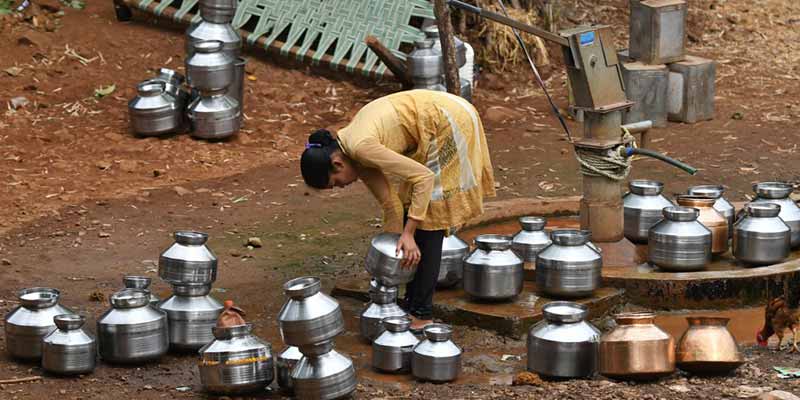- India
- Apr 20
Short Takes / Heavy metal ions in water
The Centre for Nano and Soft Matter Sciences (CeNS) has developed a compact solid-state sensor to detect the heavy metal ions in water. It is a portable device which can help onsite detection in remote areas.
Heavy metal ions such as lead, mercury and cadmium pose severe potential threats to living beings as they can easily be accumulated in the body and cannot be detoxified by any chemical or biological processes.
The health hazards associated with heavy metal ions in water demands the development of efficient and portable sensors for rapid onsite detection of these ions.
Visual sensors can effectively detect heavy metal ions rapidly (within seconds) under ambient conditions.
How does the device work?
A team of researchers led by Pralay K. Santra at CeNS developed a compact solid-state sensor to detect the heavy metal ions, for example, lead ions (Pb2+) down to 0.4 parts per billion (ppb) for efficient onsite detection.
The sensor film was prepared by forming a composite between manganese doped zinc sulfide quantum dots and reduced graphene oxide on a glass substrate.
These particular quantum dots are water-soluble and have high photoluminescence (~30 per cent) quantum yield, making them suitable for luminescence-based sensing.
If a drop of water containing heavy metal ions such as mercury, lead, cadmium, etc are added to the composite film, the emission of the film quenches within seconds.
These quantum dots can be excited with handheld UV light of 254 nm, thus making it a portable device even to remote areas.
This study demonstrates the easy detection of heavy metal ions in water. The team is developing strategies to improve the selectivity of the detection.
What is the purpose of CeNS?
The Centre for Nano and Soft Matter Sciences (CeNS) is an autonomous research institute under department of science and technology (DST) and is situated in Jalahalli, Bengaluru.
CeNS was established in 1991 by an eminent liquid crystal scientist, S. Chandrasekhar, FRS. It was then known as Centre for Liquid Crystal Research, a registered scientific society in Karnataka with the objective to build a centre of excellence in line with the international trend those days on liquid crystal materials and devices.
In 1995, it became an autonomous institute under the department of electronics (DOE) and in 2003, was brought under DST.
Subsequently in the year 2010, the name was changed to Centre for Soft Matter Research.
In 2014, the Centre further widened the scope of research activities to embrace nanoscience and technology and is now known as Centre for Nano and Soft Matter Sciences (CeNS). It is being mentored by Nano Mission of the government of India.
Nano Mission
The government launched the Nano Mission in May 2007 as an umbrella capacity-building programme. As a result of the efforts led by the Nano Mission, India is amongst the top nations in the world in terms of scientific publications in nano science and technology
The Nano Mission has resulted in some useful products like nano hydrogel based eye drops, pesticide removal technology for drinking water, water filters for arsenic and fluoride removal, nanosilver based antimicrobial textile coating, etc.
Two institutions and a large number of sophisticated characterisation and fabrication facilities have been set up in the country.
The Nano Mission has orchestrated national dialogues to promote R&D in development of standards for nanotechnology and for laying down a National Regulatory Framework Road-Map for Nanotechnology (NRFR-Nanotech).
The Nano Mission has helped to establish a good eco-system in the country to pursue front-ranking basic research and also to seed and nurture application-oriented R&D, focused on useful technologies and products.
The department of science and technology is the nodal agency for implementing the Nano Mission.
Manorama Yearbook app is now available on Google Play Store and iOS App Store

